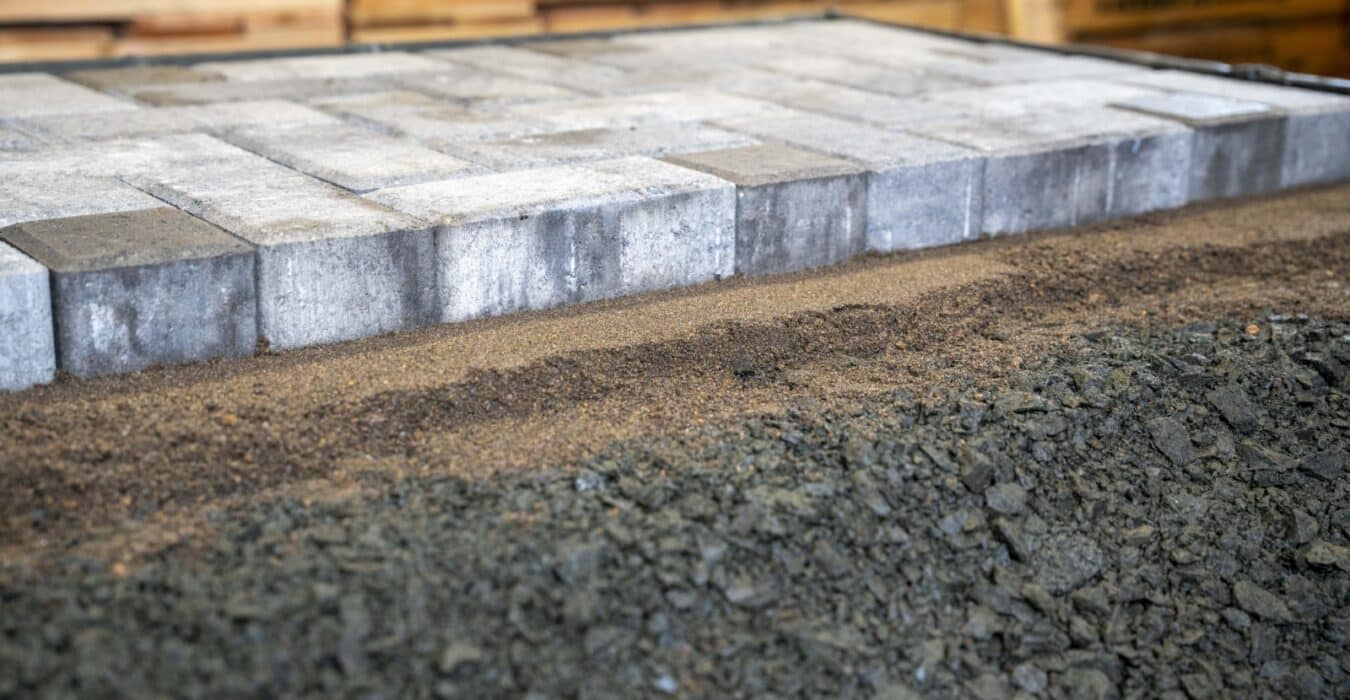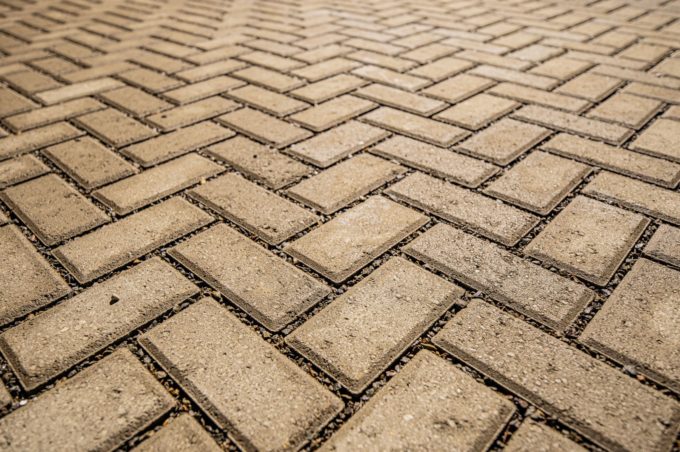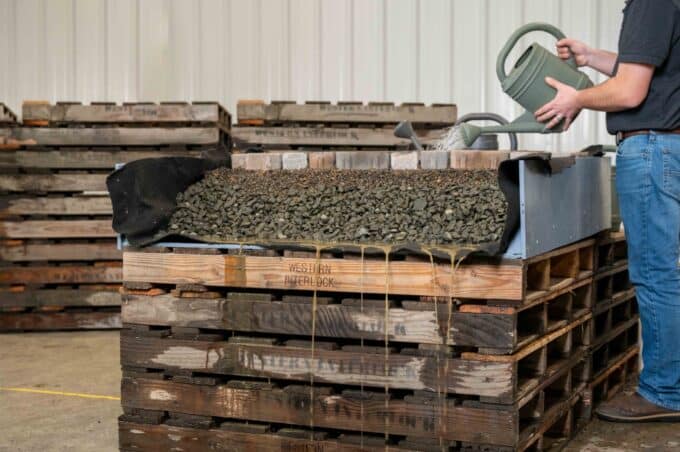Get our FREE Project Planning Guide
"*" indicates required fields
At Western Interlock, we believe in building for generations. Every paver project is an opportunity to create a space that stands the test of time. Whether you’re looking to refresh a driveway or create a cozy backyard patio, it all begins with a sturdy foundation. In this article, we’ll walk through the three main types of base construction for paving stones so you can find the best fit for your project.
Understanding the Base Layers
No matter which method you choose, a successful paver base includes two elements: a compacted base material and a bedding material. Putting these pieces together the right way helps you get a space that not only looks fantastic but can handle day-to-day wear for years to come. We design our paving stones with longevity in mind, and we’re here to guide you every step of the way—so you can build with confidence and truly enjoy your new outdoor area.
Base #1: Traditional Base
The first and most common type is simply called traditional base construction, but is also known as dense grade base construction.
Traditional base is composed of ¾” minus gravel layered with 1” of concrete sand. Depending on your soil type, begin by laying a geotextile fabric. For the base layer, you will need 4-6 inches (for light vehicular and pedestrian traffic) or 6-12 inches (for heavy vehicular traffic) of ¾” minus gravel. The base material should be compact in 2-4 inch lifts. For the next layer, the bedding material, we recommend concrete sand screeded to a uniform depth of 1 inch.
One of the main advantages of this base construction method is that the materials are readily available anywhere. The dense graded base material is a DOT specified gravel, and ATSM C-33 concrete sand is a specified sand as well. These materials should be widely available across the country. A disadvantage to the traditional base is that the materials tend to retain moisture and be weather sensitive, especially during the construction process. However, if traditional paver base is installed correctly in proper weather conditions, it is a great base construction method for all sand set paving stone projects.
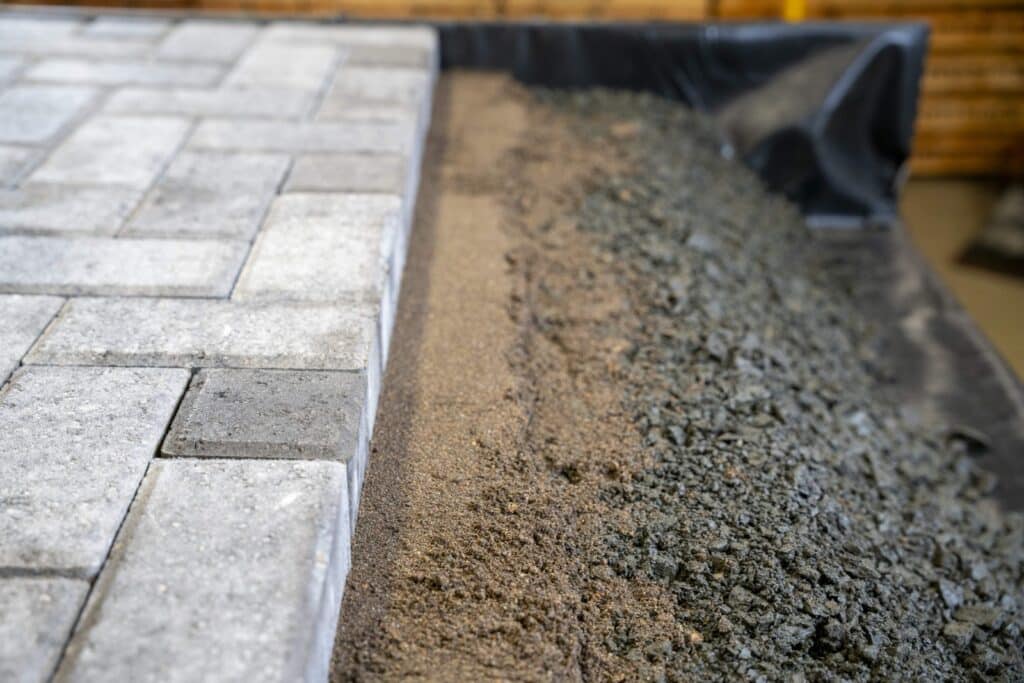
Base #2: Hybrid Base
The second method is called the hybrid base method. The base material consists of the same ¾” minus gravel, but ¼” #10 aggregate replaces the concrete sand as the bedding material.
For a hybrid base, you first lay 4-6 inches of ¾” minus gravel as base material. Then, instead of screeding in your concrete sand, you screed in 1 inch of ¼” or ⅜” clean bedding material and lay your paving stones directly on top of that.
While the base material is readily available in most locations, the ¼” #10 for the bedding layer may be more difficult to find. Additionally, while the dense graded base material is still susceptible to freeze-thaw cycles, one of the best advantages of hybrid base construction is that the bedding material is not limited by weather during the installation process. In addition, the small stones are easy to walk on and level during the installation process. If ¼” #10 aggregate is available in your area, the hybrid base system can simplify the installation process of your next paving stone project.
Base #3: Open-Graded Base
The third method you can choose is called open-graded base construction. This method is called open-graded because it is free of all fine materials and is instead composed of entirely washed and crushed aggregates. If you are building with permeable paving stones, this is the only base construction you should use.
If you are building an open-graded base for a permeable or nonpermeable paving stone projects, begin with a geotextile layer. For the base material, lay 4-10 inches of 1” or ¾” crushed open rock. Compact the base material 4 inch lifts. On top of the base layer, the bedding material should be 1 to 1½ inches of chip-style bedding, such as ¼” #10 or ⅜” crushed chip rock. Your paving stones can go directly on top of the bedding material.
If you’re looking for a base method that works for both permeable and sand-set applications—while providing excellent drainage—an open-graded base is a top choice. It’s built in thicker layers without fine particles, so you can easily remove and replace sections if you ever need to make adjustments or expand your project. The only downside is that, depending on where you live, open-graded materials may be more difficult or expensive to source. Still, it’s worth exploring local suppliers, because an open-graded base can be an excellent foundation for your next paver driveway, walkway, or outdoor space.
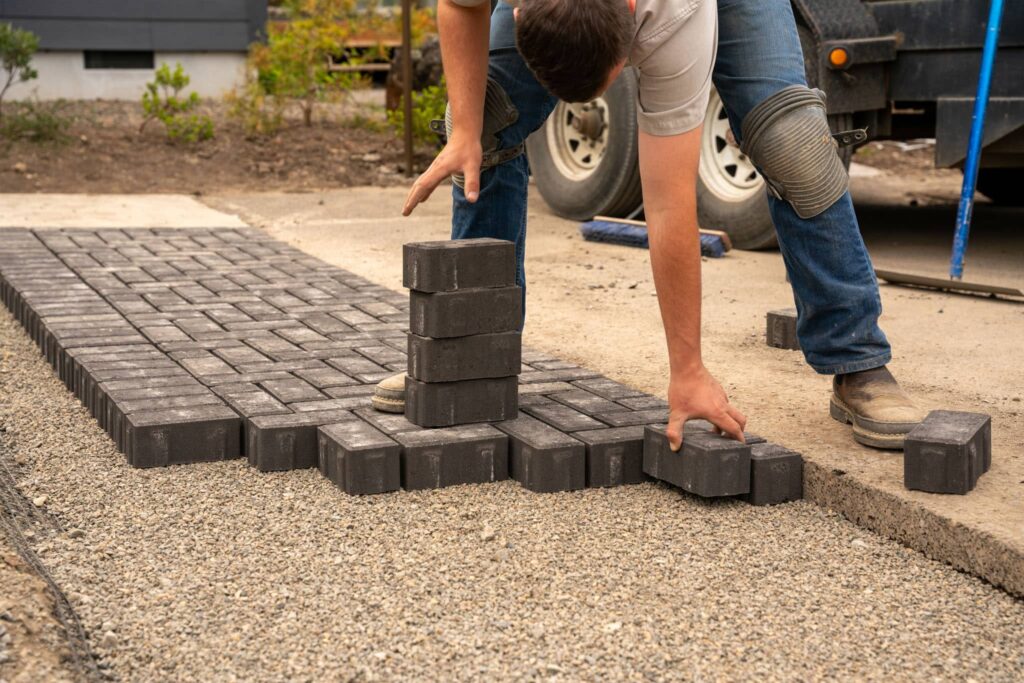
Explore Additional Resources
If you are ready to get started and choose what materials to use for your hardscape project, you can click here to make your choice from our selection of products. Also, check out our DIY with WI page for access to tutorials, guides, and more. Our team will be happy to assist you with any questions or personalized advice you need for any step of your hardscape project, from your project base to the finishing touches.
Get our FREE Project Planning Guide
Tell us where to send it and we’ll email the backyard planning guide to you right away!
"*" indicates required fields


